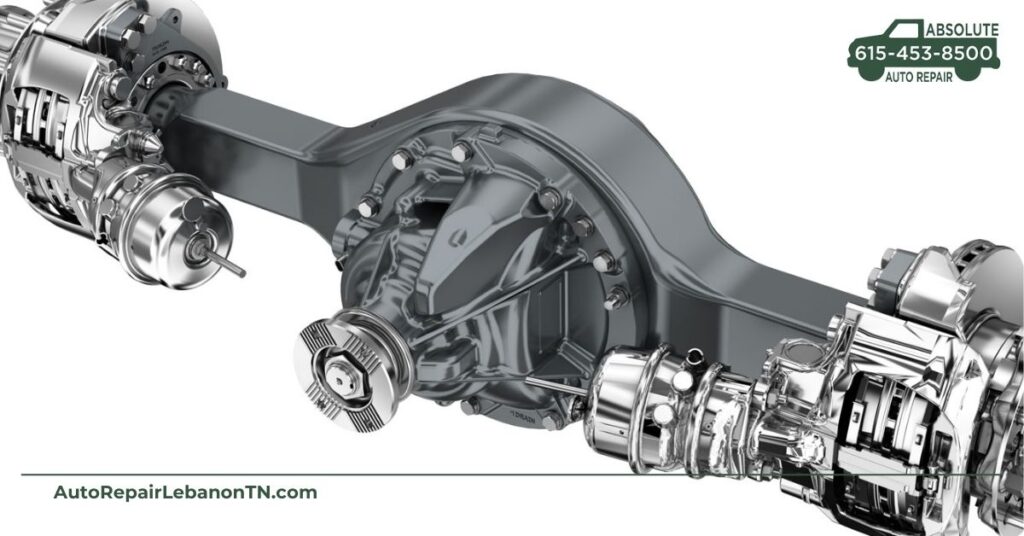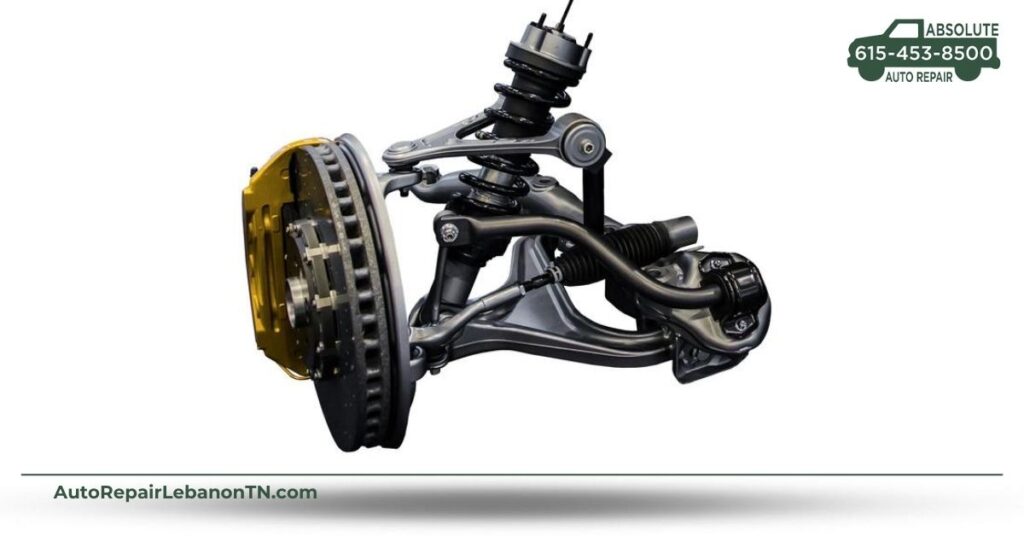When you think about your car’s performance and safety, the axle might not be the first component that comes to mind. Yet, this crucial part plays a vital role in how your vehicle drives and handles the road. Understanding what an axle is and how it functions can give you valuable insights into your car’s mechanics and help you appreciate the engineering behind your ride.
An axle connects the wheels to the vehicle and supports the weight while allowing them to rotate. It’s more than just a metal rod; it’s the backbone of your car’s drivetrain. Whether you’re a car enthusiast or just someone who wants to keep their vehicle in top shape, knowing about axles can make a important difference in your driving experience. Let’s dive deeper into the industry of axles and uncover their importance in your car’s performance.
Understanding Axles

Axles play a vital role in your vehicle’s structure and performance. They connect the wheels to the car, supporting its weight and enabling effective movement.
Definition of an Axle
An axle is a central shaft that rotates the wheels and transfers power from the engine. This crucial component bears the vehicle’s weight while facilitating wheel movement. You can think of it as a backbone that maintains stability, especially when handling turns or uneven surfaces. Different types of axles support various driving conditions, ensuring optimal performance.
Types of Axles
Several axle types exist, each designed for exact functions:
- Drive Axles: These axles transmit power to the wheels, crucial for propelling your vehicle. Drive axles come in two varieties: front-wheel and rear-wheel drive, depending on where the power is directed.
- Non-Drive Axles: These support the vehicle’s weight without transmitting power. Often found on trailers and some vehicles, they define how the load is distributed.
- Live Axles: Live axles provide both support and power transmission. These elements allow for independent wheel movement, improving traction and stability.
- Dead Axles: These axles do not transmit power but help support additional weight. Used in vehicles like trailers, they improve stability while maneuvering.
- Independent Axles: This type allows wheels to move independently, providing a smoother ride. By reducing body roll, independent axles make cornering more comfortable.
- Solid Axles: Solid axles feature a single shaft connecting the wheels. Common in off-road and heavy vehicles, they provide robustness for tackling tough terrains.
Choosing the right axle type contributes significantly to your vehicle’s performance, safety, and handling capabilities.
Functions of an Axle

Axles serve multiple vital functions within a vehicle, ensuring optimal performance and safety while driving. Understanding these functions can enhance your knowledge of how your car operates.
Weight Distribution
Weight distribution is crucial for vehicle stability and handling. An axle supports the vehicle’s weight by connecting the wheels, ensuring that the load is evenly distributed across all four tires. This balance prevents uneven tire wear and enhances grip on the road. Without proper weight distribution, your vehicle might experience difficulty in steering or braking effectively.
Power Transmission
Power transmission plays a key role in a car’s ability to move. An axle transmits engine power from the drivetrain to the wheels, utilizing rotational force to propel the vehicle. This process allows for effective acceleration and deceleration. The rear axle, in particular, is vital in delivering power to the rear wheels, which is essential in rear-wheel-drive systems. Through this transmission, you gain control as you navigate various driving conditions.
Components of an Axle

Understanding the components of an axle can clarify its critical role in vehicle function. The main components include the shaft and bearings, both essential for smooth operation and vehicle stability.
Shaft
The shaft serves as the main component of the axle, acting as a rotating bar that connects the wheels. It’s designed to withstand the immense weight of the car while transmitting power from the engine. In the rear axle, the shaft is often divided into two halves called half shafts, allowing for improved handling and smooth power delivery. The front axle shaft significantly helps in steering and handling, improving driving performance.
Bearings
Bearings play a crucial role in reducing friction between the axle and the wheels. They support the shaft’s rotation, allowing the wheels to turn smoothly. High-quality bearings ensure longevity and optimal performance, directly impacting handling and overall vehicle safety. Regular inspection of bearings is necessary since worn or damaged bearings can lead to severe issues, including tire wear and stability problems.
Common Issues with Axles

Axles play a vital role in your vehicle’s performance. But, they can encounter various issues, which can impact handling and safety.
Symptoms of Axle Problems
You might notice several symptoms that indicate axle problems. Unusual noises, like grinding or clicking sounds when turning, often suggest an issue with the axle. Vibrations while driving, especially at higher speeds, may indicate a bent or damaged axle. Also, uneven tire wear can stem from axle misalignment. If your vehicle pulls to one side, it might point to a problem with the front axle.
Repair and Replacement Options
Repairing or replacing an axle often depends on the severity of the issue. Minor issues, such as worn bearings or seals, can typically be repaired without replacing the entire axle. But, a bent or severely damaged axle often requires a complete replacement. For rear axles, you may need to replace both half-shafts if one shows damage. Always consult a professional mechanic to assess the situation accurately and recommend the best course of action. Regular inspections and maintenance can help prevent axle issues from escalating.
Conclusion
Understanding the role of axles in your vehicle can’t be overstated. These components are crucial for ensuring your car operates smoothly and safely. By grasping how axles function and recognizing their various types you can make informed decisions about maintenance and repairs.
Regular inspections and attention to any signs of trouble can prevent minor issues from turning into costly repairs. Whether you’re a car enthusiast or simply want to keep your vehicle in top shape knowing about axles enhances your overall driving experience. Prioritize axle health to ensure your vehicle remains reliable and performs at its best on the road.
Frequently Asked Questions
What is the role of axles in a vehicle?
Axles connect the wheels to the vehicle and support its weight. They are crucial for vehicle performance and safety, playing a key part in the drivetrain by aiding in power transmission and stability during turns and on uneven surfaces.
What are the different types of axles?
There are several types of axles including drive axles, non-drive axles, live axles, dead axles, independent axles, and solid axles. Each type is designed for specific functions and driving conditions, affecting a vehicle’s performance and handling.
How do axles contribute to vehicle stability?
Axles ensure proper weight distribution across all four tires, which is essential for vehicle stability. This even load helps prevent uneven tire wear and improves grip on the road, enhancing overall handling capabilities.
What are the main components of an axle?
The primary components of an axle include the shaft and bearings. The shaft connects the wheels and transmits power from the engine, while bearings reduce friction, enabling smooth rotation and contributing to vehicle safety and performance.
What symptoms indicate axle problems?
Common symptoms of axle issues include unusual noises (like grinding or clicking when turning), vibrations while driving, uneven tire wear, and the vehicle pulling to one side. These signs may signal front axle problems that need addressing.
How often should axles be inspected?
Regular inspections of axles are important to prevent issues from escalating. It’s recommended to have them checked during routine vehicle maintenance to ensure everything is functioning properly and to catch any potential problems early.
Can axle problems be repaired?
Minor axle issues, such as worn bearings, can often be repaired. However, severely damaged axles may require complete replacement. It’s best to consult a professional mechanic for an accurate assessment and appropriate solutions.

